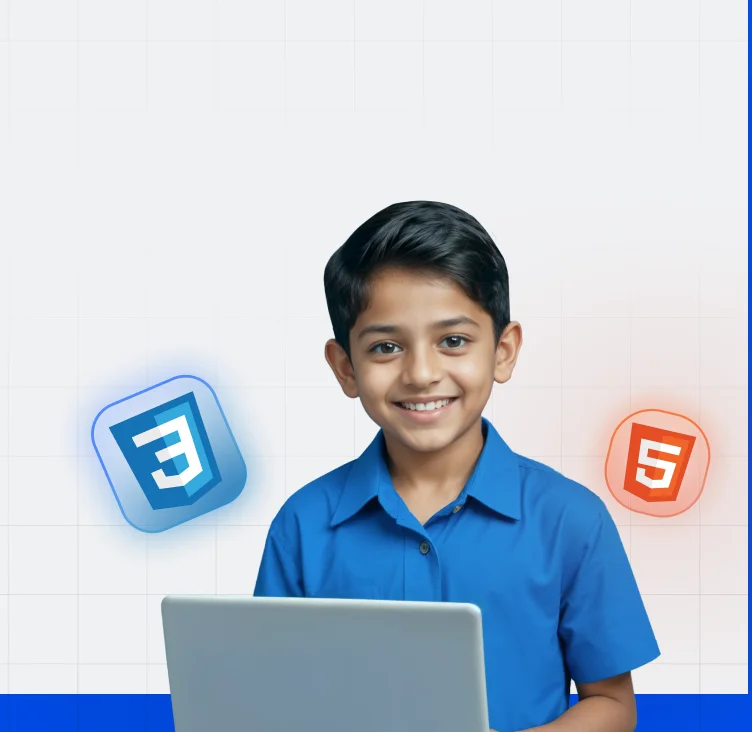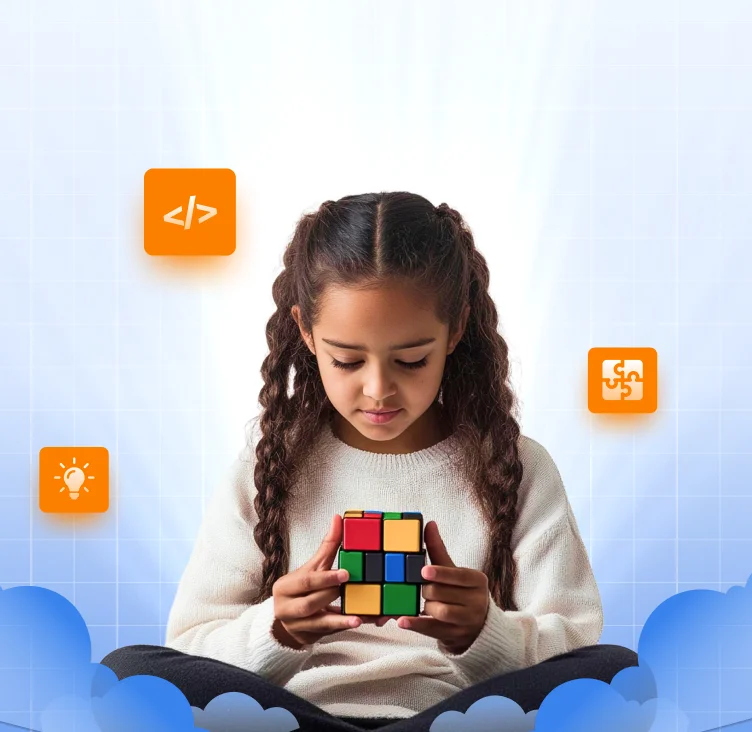Understanding Sequencing in Coding for Kids
By Srinithi SankarHave you ever watched your child try to follow a recipe and put sprinkles on the cake before baking it? That’s what happens when the sequence of steps goes a little wonky! The same idea applies to coding. Understanding sequencing in coding for kids is one of the most important early lessons to help them learn how to think logically, solve problems, and build their cool digital creations.
In this blog, we’ll explore what sequencing in coding means, why it matters, fun ways to teach it, and how to avoid common pitfalls. Let’s dive into the world where kids learn to think logically, solve problems, and create their tech magic!
What is Sequencing in Coding?
Sequencing is the art of putting instructions in the right order so that a computer knows exactly what to do and when. It’s like giving a robot a list of things to do: if the robot gets the order wrong, the task might go hilariously (or disastrously!) off course.
In simple terms, sequencing in coding for kids is the basic building block of programming. It helps children understand how actions flow from one to the next. Without it, nothing in coding works properly. It’s why your character jumps after you press the space bar, not before!
Imagine you’re making a sandwich. What happens if you put the bread after the peanut butter? Or forget the bread altogether? You’d have a gooey mess on your hands!
In coding, sequencing is just like following a recipe or set of instructions. It means giving the computer steps in the right order so it knows exactly what to do and when to do it.
Simple Example:
Let’s say you want a robot to:
- Stand up
- Walk forward
- Wave hello
But you accidentally code:
- Walk forward
- Wave hello
- Stand up
The robot might try to walk while sitting! Uh-oh! That’s why sequencing matters; it keeps things in the right order so the program works the way you expect.
Real-Life Kid Example:
- Think of brushing your teeth:
- First, you pick up the toothbrush.
- Then, you put toothpaste on it.
- Finally, you brush.
If you do this in the wrong order, like brushing first and then adding toothpaste, it just doesn’t work! That’s sequencing in everyday life.
In coding, it’s all about teaching kids that every action must come in the correct step-by-step order to make their game, app, or robot function smoothly.
Benefits of Learning Sequencing in Coding
So, why is sequencing such a big deal?
- Boosts Logical Thinking
Kids begin to see how things connect and follow a logical path. Sequencing encourages them to think before they click.
- Encourages Problem-Solving
When the code doesn’t do what they expect, kids start to troubleshoot. This builds resilience and strong problem-solving skills.
- Builds a Strong Foundation
Before kids can loop or branch in code, they need to understand how simple steps work in sequence.
- Improves Real-World Skills
Sequencing is all around us, from brushing teeth to getting dressed. Coding just makes it more fun to practice!
Fun Ways to Teach Sequencing in Coding
Ready to make sequencing fun and memorable? Here are creative, hands-on activities that make coding concepts click, no screens, apps, or tech tools required!
- Dino Dance-Off
Create silly “coding cards” with actions like: stomp, spin, roar, jump, and clap. Have your child place the cards in a sequence to make their dinosaur dance routine. Then act it out together! Mess up the order and you get a silly dance bug (a fun mistake, just like real coding bugs!).
- Chef Code Challenge
Set up a pretend kitchen. Give your child an “order list” (e.g., make a sandwich or mix a smoothie). Have them write or draw each step as a command. Follow their instructions exactly, even if they forget to open the bread bag or put the lid on the blender. They’ll quickly see how each step (and the order!) matters.
- Stuffed Toy Obstacle Course
Build a mini obstacle course. Place your child’s favorite toy at the start. Now let your child “code” the toy through the course using arrows and step cards like: move forward, turn right, hop, pick up, sit. The toy can’t move unless the “code” is correct!
- Story Time Scramble
Write a short story or fairy tale, then cut the sentences apart and scramble them. Let your child rearrange the story into the correct sequence. Talk about how stories (like code) need a beginning, middle, and end to make sense.
- Sequence Art
Give kids a craft project, but hide the steps! They must decode the right order of “instructions” to make a paper rocket or a drawing. For example: draw a triangle, then a rectangle, then color it red, then glue. If they glue before drawing… surprise! It’s messy!
Common Mistakes Kids Make While Learning Sequencing in Coding
Learning to sequence can feel like solving a mystery at first. Mistakes aren’t failures, they’re stepping stones to mastering coding. Here are such mistakes that can lead to success:
- Skipping steps: They forget one or two important actions in their code.
- Getting the order wrong: Mixing up commands can lead to confusing outcomes.
- Trying to do too much at once: They add too many instructions before testing, which makes debugging harder.
- Not reading the output: Sometimes they don’t stop to see what their code does; observing is key!
Gently guiding them to slow down and check their steps can make a world of difference.
Why Choose HackerKid to Learn About Sequencing in Coding?
At HackerKid, we believe that every child is a natural-born coder; sometimes, they just need the right tools and guidance to unleash their inner tech genius.
- Interactive Lessons: Step-by-step coding games that make learning feel like play.
- Skill-Progression Paths: Each activity builds on the last, strengthening their understanding of the order of instructions in coding.
- Parent & Teacher Dashboards: Track your child’s learning and celebrate every milestone.
- Focus on Computational Thinking: We teach more than just code; we teach kids how to think.
When your child learns sequencing with us, they’re not just learning to code, they’re learning how to solve problems in real life.
Ready to Test Your Tech Knowledge? Skip boring quizzes and explore Buzzer, the ultimate MCQ game for kids passionate about computer science and technology! Pick a topic, hit the buzzer, and challenge yourself with exciting gamified questions. Think fast, answer smart, and climb the leaderboard! Play Buzzer now!
Conclusion
Understanding sequencing in coding for kids is like teaching them how to organize their thoughts and turn them into something amazing. Whether it’s building a story, baking a pizza, or coding a video game, sequencing lays the foundation for everything they’ll do in tech and beyond. With fun, engaging tools like HackerKid, they’ll master the logical flow in programming without even realizing they’re learning.
Let’s help kids learn to think like coders one step at a time!
Want to give your child a head start in coding? With HackerKid, they’ll follow a well-structured path built by experts, engage in fun, hands-on learning, and build real projects along the way. No confusion, no aimless browsing, just the right guidance at the right time.
Fill out the form to get a personalized roadmap and start your child’s tech journey today!
FAQs
Q1. At what age should kids start learning sequencing in coding?
Most kids can start exploring basic sequencing concepts around age 5–7 through simple games and unplugged activities.
Q2. What are some offline ways to teach sequencing?
Board games, recipe-following, Lego building, or even getting dressed in order can all reinforce sequencing skills.
Q3. How long does it take to learn sequencing?
It varies! With consistent practice and fun, engaging methods, kids often grasp sequencing basics within a few weeks.
Q4. Is it okay if my child makes mistakes while learning?
Absolutely! Making mistakes is a crucial part of learning to code. Debugging teaches patience, persistence, and creativity.
Q5. Can sequencing help with subjects other than coding?
Yes! It strengthens storytelling, math problem-solving, and everyday life skills like following directions or organizing tasks.









